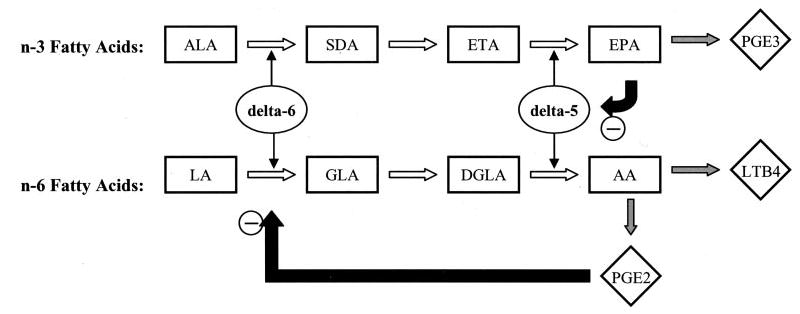Figure 1.

Metabolism of n-6 and n-3 PUFAs. δ-5 and δ-6 desaturase enzymes (ovals) are active in both n-3 and n-6 fatty acid metabolism, converting intermediate-chain n-3 ALA to long-chain n-3 EPA and n-6 linoleic acid (LA) to n-6 arachidonic acid (AA). EPA is converted to prostaglandin E3 (PGE3), an eicosanoid with potential antiinflammatory and antithrombotic effects, whereas AA is converted to PGE2 and leukotriene B4 (LTB4), both proinflammatory eicosanoids. Thus, n-3 and n-6 fatty acids compete for common metabolic enzymes, and relative intake of these fatty acids has been hypothesized to determine potential proinflammatory vs antiinflammatory, thrombotic, and aggregatory effects. Metabolites in these pathways also exert feedback inhibition (black arrows); eg, long-chain n-3 EPA inhibits an important step in the elongation of intermediate-chain n-3 ALA. SDA indicates stearidonic acid (octadecatetranoic acid); ETA, eicosatetraenoic acid; GLA, γ-linolenic acid; and DGLA, dihomo-γ-linolenic acid. Other abbreviations are as defined in text.
